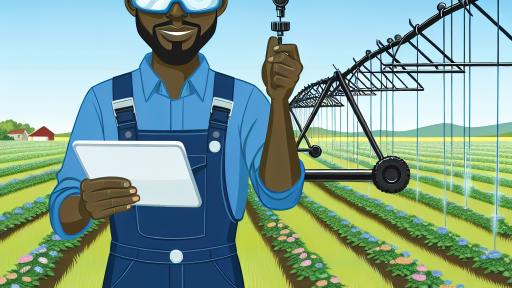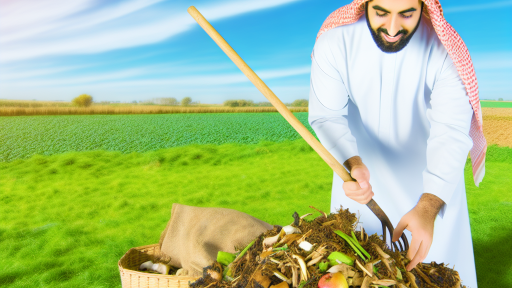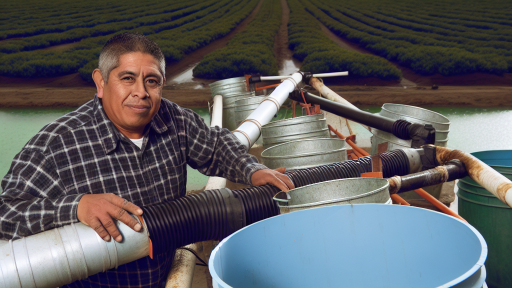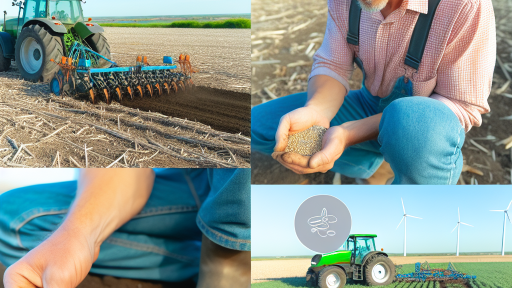Introduction to Conservation Tillage
Conservation tillage is a farming method that improves soil health.
This technique involves reducing soil disturbance during planting.
Farmers benefit from conserving moisture and nutrients in the soil.
Additionally, it minimizes erosion caused by wind and water.
As a result, this approach enhances agricultural sustainability.
Importance of Conservation Tillage in Climate Resilience
Climate resilience refers to the ability of agricultural systems to adapt to changes.
Conservation tillage plays a vital role in achieving this adaptability.
It helps sequester carbon, thus reducing greenhouse gas emissions.
Moreover, it improves the soil’s capacity to retain water during dry spells.
This enhanced water retention supports crop productivity during droughts.
Furthermore, conservation tillage decreases reliance on chemical fertilizers.
This reduction leads to better water quality in nearby water bodies.
This technique fosters a more resilient agricultural ecosystem.
Overview of Conservation Tillage Techniques
No-Till Farming
No-till farming eliminates plowing altogether.
This method maintains soil structure and health.
Transform Your Agribusiness
Unlock your farm's potential with expert advice tailored to your needs. Get actionable steps that drive real results.
Get StartedFarmers directly seed into the resting soil.
In addition, it preserves moisture effectively.
There is also less soil erosion over time.
Overall, no-till farming boosts carbon sequestration.
Reduced Tillage
Reduced tillage minimizes soil disturbance.
This approach leaves a significant amount of crop residue.
It helps enhance soil quality and biodiversity.
Farmers typically mix different tillage techniques.
As a result, they can tailor methods to specific needs.
Furthermore, reduced tillage supports better water retention.
Strip-Till Farming
Strip-till farming focuses on tilling narrow strips.
It allows for planting in undisturbed soil areas.
This method combines benefits from both no-till and reduced till.
Strip-till increases crop yields by improving soil health.
Moreover, it enhances moisture conservation.
Farmers often find this method cost-effective over time.
Benefits of Conservation Tillage on Soil Health and Structure
Enhancing Soil Structure
Conservation tillage improves soil structure significantly.
This technique reduces soil compaction effectively.
Moreover, it promotes better root penetration and growth.
Increasing Soil Organic Matter
Organic matter levels rise with conservation tillage practices.
This increase enhances soil fertility markedly.
Consequently, healthier soil supports greater crop yields.
Improving Water Retention
Another key benefit is improved water retention in the soil.
Conservation tillage reduces runoff effectively.
Showcase Your Farming Business
Publish your professional farming services profile on our blog for a one-time fee of $200 and reach a dedicated audience of farmers and agribusiness owners.
Publish Your ProfileAs a result, plants access moisture more efficiently.
Enhancing Soil Microbial Activity
Conservation tillage fosters beneficial microbial activity in the soil.
Healthy microbial populations contribute to nutrient cycling.
This enhances overall soil health and plant vitality.
Reducing Erosion
Soil erosion decreases significantly with conservation tillage.
This practice protects against nutrient loss.
It also maintains topsoil integrity over time.
Encouraging Biodiversity
Conservation tillage promotes biodiversity in agricultural ecosystems.
Increased plant cover supports various soil organisms.
This leads to a more resilient soil environment.
Learn More: Benefits of Carbon Sequestration in Agriculture
Impact of Conservation Tillage on Water Conservation and Erosion Control
Benefits of Water Conservation
Conservation tillage significantly improves water retention in soil.
This practice reduces surface runoff during heavy rains.
As a result, moisture remains available for crops during dry spells.
Ultimately, this increased water efficiency enhances crop yields.
Erosion Control Measures
Conservation tillage reduces soil erosion by maintaining soil structure.
It keeps a protective layer of residue on the soil surface.
This layer prevents wind and water from directly eroding the soil.
Consequently, farmers notice improved soil health and fertility over time.
Long-Term Soil Benefits
Soil enriched through conservation tillage becomes more resilient.
Improved soil structure leads to better root penetration.
Increased organic matter supports diverse soil organisms.
Healthy soils contribute to overall agricultural sustainability.
Implementing Conservation Tillage
Farmers can adopt various conservation tillage techniques.
These may include no-till, strip-till, and reduced till options.
Each method offers unique benefits based on local conditions.
Choosing the right technique maximizes both water conservation and erosion control.
Gain More Insights: Restoring Depleted Soils Through Regeneration
Case Studies Highlighting Successful Implementation of Conservation Tillage
Midwestern United States
Farmers in Iowa have embraced conservation tillage over the past decade.
This method reduces soil erosion and enhances water retention.
Local farmer Sarah Thompson reported a 25 percent increase in crop yields.
She attributes this success to improved soil health and moisture preservation.
The state provides financial assistance for implementing these practices.
Southern Brazil
In Brazil, farmers are adopting no-till farming techniques.
A cooperative, Agropecuaria Nova Esperança, leads the charge in this region.
The cooperative’s members have recorded higher profits due to reduced input costs.
This method also improves carbon sequestration, benefiting the environment.
Brazilian farms are now serving as models for sustainable agriculture.
Western Australia
Western Australian farmers face unique climate challenges such as drought.
Many have turned to conservation tillage to combat these issues.
Showcase Your Farming Business
Publish your professional farming services profile on our blog for a one-time fee of $200 and reach a dedicated audience of farmers and agribusiness owners.
Publish Your ProfileGregory Martin, a wheat farmer, has seen dramatic improvements in soil moisture levels.
His fields yield better quality crops, even during dry seasons.
Local agricultural extension services provide resources and training for farmers.
Eastern Europe
In Romania, conservation tillage practices are gaining momentum.
Farmers are learning to prioritize soil quality and biodiversity.
The European Union supports such initiatives through funding and education.
Farmers report a decrease in weed pressure and improved soil structure.
These gains create a more resilient agricultural landscape.
Southeast Asia
Farmers in Thailand are utilizing conservation tillage to enhance rice production.
This approach minimizes disruption to the earth’s surface.
As a result, soil microbes thrive, promoting healthier ecosystems.
Community workshops have been established to share best practices.
These efforts lead to increased engagement and knowledge among local farmers.
Gain More Insights: Biodiversity-Friendly Pest Management Tips
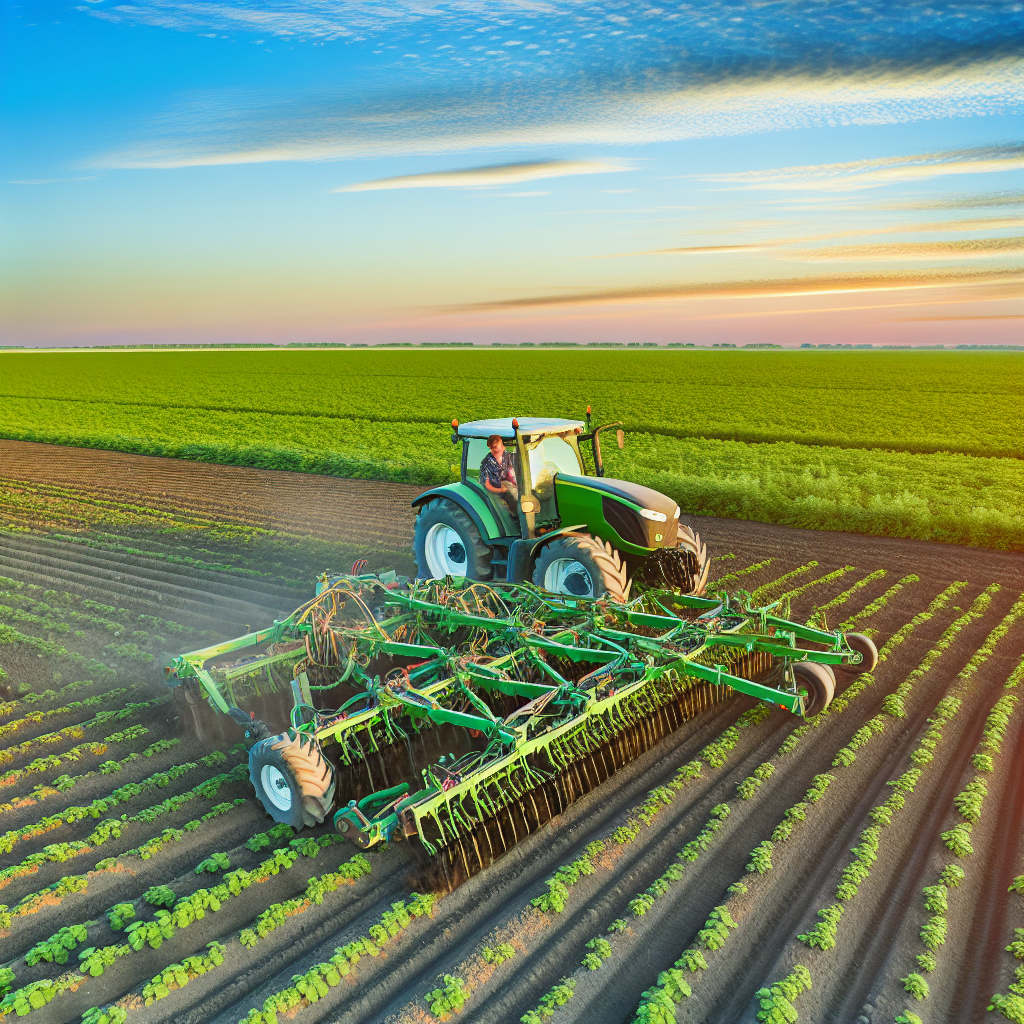
Challenges and Barriers to Adopting Conservation Tillage Practices Among Farmers
Financial Constraints
Many farmers face significant financial constraints when adopting conservation tillage.
The initial investment for new equipment can be prohibitive.
Additionally, farmers may lack access to credit or financial assistance programs.
Without sufficient funds, transitioning becomes a daunting task.
Knowledge Gaps
A lack of knowledge about conservation tillage techniques hinders adoption.
Many farmers are unaware of the environmental benefits of these practices.
Furthermore, insufficient training and resources add to the challenges.
Workshops and educational programs can bridge this gap effectively.
Soil Type Adaptation
Different soil types may not be suited for conservation tillage.
Farmers often worry that their land may not support these practices.
Understanding local soil characteristics is crucial for proper implementation.
Local agricultural extensions can offer tailored advice on soil suitability.
Cultural Resistance
Cultural attitudes towards traditional farming methods can pose barriers.
Many farmers have longstanding habits that resist change.
Overcoming cultural resistance requires time and persuasive dialogue.
Peer-to-peer engagement can motivate farmers to embrace new techniques.
Policy and Regulation Issues
Inconsistent agricultural policies can complicate decision-making.
Farmers often face uncertainty in regulations regarding tillage practices.
Clear guidelines and supportive policies could foster wider adoption.
Advocacy for farmer-friendly policies is essential for progress.
Market Access and Economic Incentives
A lack of economic incentives discourages farmers from adopting conservation methods.
Access to markets that reward sustainable practices remains limited.
Creating incentive programs can encourage adoption significantly.
Market demand for sustainable products is growing and should be leveraged.
Explore Further: Natural Pest Control Methods in IPM
Economic Considerations and Cost-Benefit Analysis of Conservation Tillage
Understanding Conservation Tillage Costs
Implementing conservation tillage involves initial costs for equipment and training.
Showcase Your Farming Business
Publish your professional farming services profile on our blog for a one-time fee of $200 and reach a dedicated audience of farmers and agribusiness owners.
Publish Your ProfileFarmers may need to invest in specialized machinery.
Additionally, education on best practices is crucial for successful implementation.
However, these upfront investments can lead to long-term savings.
Evaluating Financial Benefits
Conservation tillage improves soil health, which can enhance crop yields.
Higher yields can significantly increase a farmer’s income over time.
Lower input costs for fertilizers and pesticides also add financial benefits.
This method reduces erosion, preserving topsoil and maintaining productivity.
Long-Term Economic Impact
The adoption of conservation tillage contributes to climate resilience.
Farmers become less vulnerable to extreme weather events like droughts and floods.
Economically, this resilience can stabilize income across varying conditions.
Furthermore, it fosters sustainable agricultural practices for future generations.
Cost-Benefit Analysis Models
A comprehensive cost-benefit analysis is crucial for decision-making.
Farmers can use models to estimate potential savings over time.
These models should include factors such as yield improvements and cost reductions.
Additionally, environmental benefits like reduced carbon emissions should be considered.
Real-World Examples of Cost Benefits
In a study by the Agricultural Research Service, farmers saved up to 30% on tillage costs.
The Midwest Sustainable Agriculture Research and Education program shows similar findings.
Farmers in this program reported higher profit margins after switching to conservation tillage.
Such real-world examples reinforce the economic viability of these practices.
Future Prospects: Integrating Conservation Tillage with Other Sustainable Practices for Enhanced Climate Resilience
Understanding Integration Benefits
Integrating conservation tillage with other sustainable practices enhances soil health.
It improves farm productivity while reducing environmental impacts.
Furthermore, it fosters resilience against climate variability.
Collaborative Approaches to Sustainability
Farmers can adopt crop rotation alongside conservation tillage.
This method enhances soil nutrient diversity and prevents pest buildup.
Additionally, cover cropping complements conservation tillage effectively.
Cover crops prevent soil erosion and improve moisture retention.
Implementing Agroecological Principles
Agroecology emphasizes biodiversity on farms.
Integrating diverse crops increases ecosystem stability.
This approach also supports beneficial insect populations.
Consequently, farmers can reduce reliance on chemical inputs.
Utilizing Technology for Better Outcomes
Precision agriculture technologies optimize resource usage.
These technologies monitor soil moisture and nutrient levels accurately.
Farmers can adjust practices for maximum effectiveness.
Moreover, data analysis can inform better decision-making.
Engaging in Community-Based Efforts
Community engagement fosters shared knowledge and resources.
Local workshops can teach effective conservation tillage practices.
Collaboration among farmers strengthens collective climate action.
Policy Support and Advocacy
Policy frameworks can promote sustainable farming practices.
Supportive regulations can facilitate financial incentives for farmers.
Governments should prioritize funding for research in sustainable methods.
Showcase Your Farming Business
Publish your professional farming services profile on our blog for a one-time fee of $200 and reach a dedicated audience of farmers and agribusiness owners.
Publish Your ProfileContinuous Education and Training
Ongoing education is crucial for successful practice adoption.
Farmers need regular training on innovative techniques.
Access to information enhances their ability to adapt to changes.
Additional Resources
Conservation tillage impacts on soil, crop and the environment …
Conservation agriculture and climate resilience – ScienceDirect

